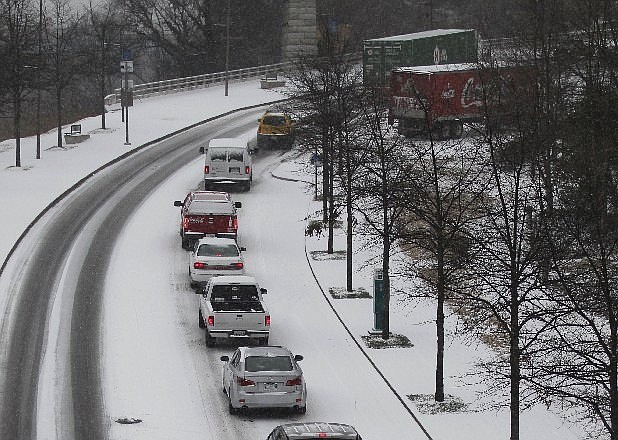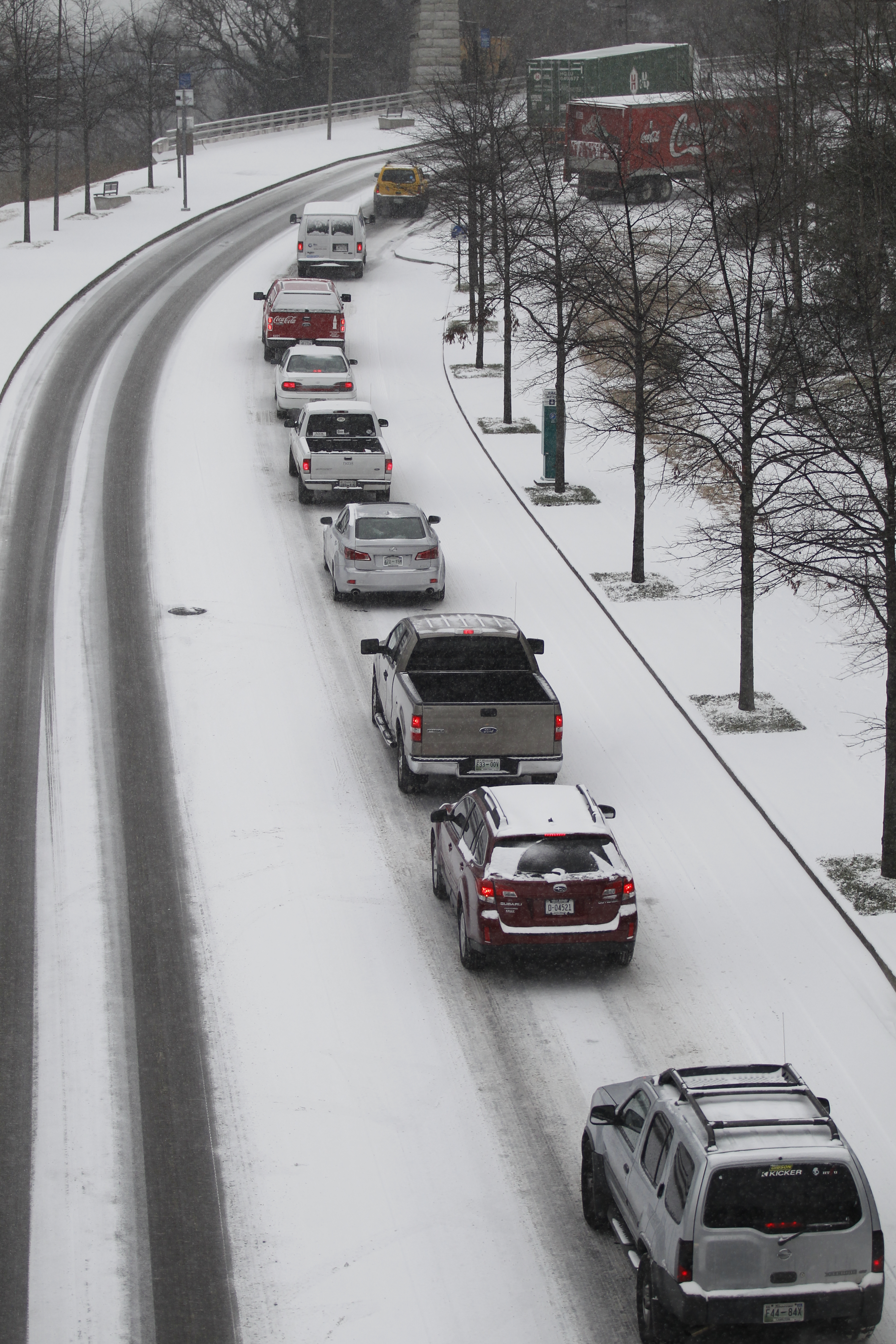Mistakes happen. It's understandable. But not too forgettable when the mistakes involve snowy roads.
Tuesday in Chattanooga was an example of a cacophony of mistakes.
First the National Weather Service and local forecasters the day before underestimated the power of the low-swooping jet stream and its effect.
Then city and county officials didn't salt roads because we were only supposed to get flurries. When they finally did salt, the ensuing slush froze again within no time.
In the midst of all this, school leaders made an ill-timed decision to call parents to pick up kids because schools were closing.
Businesses then began the same spiral. One after another closed -- both because their workers had to go get children and because customers were either trapped on the roads or smart enough to have made their own forecasts and decided that lunch out or shopping could wait a day.
The result was that virtually every car in the Hamilton County area was on the road in the height of a small but dangerous snowstorm. And all those cars were on roads unprepared for either the weather or the traffic onslaught. Officials reported 132 accidents in a matter of hours.
Here's what's nuts about this.
In December, three days before cold and possible snow was forecast -- and even while temperatures were balmy and almost coastal -- salt trucks were plying Highway 153 and the mountain roads.
Weather folks can say all day long that the models didn't put us in the path of this storm. But isn't it a given that any time the jet stream swoops and picks up Gulf moisture, it pretty much spells precipitation for us?
Secondly, where was communication in all this? Do weather, emergency and school officials not talk? Apparently not. If they did, they probably would have discussed a "shelter-in-place" and/or tiered school closing plan -- something emergency management officials should be familiar with since they regularly do drills with the FEMA for any number of emergencies.
In fact, we know local emergency planners and local elected officials and school leaders do talk, or at least they used to. We've seen that talk in action before. Three days before the worst tornadoes ever to descend on this region occurred in April 2011, former Hamilton County Emergency Management Chief Bill Tittle, now retired, was holding briefings that included even news agencies.
And good heavens, what did we do just a couple of decades ago -- before we got these super fancy weather Doppler thingies?
But one lesson stands out. Now that we've seen how just one slightly off weather forecast can create such a cascade of problems, we need to ask one really important question:
What if this had been a truly big life-threatening emergency? What if this had been gridlock trying to evacuate the city or region because of a nuclear accident, or dam failures, or terrorist threat, or deadly chemical leaks wafting on wind from a wrecked train?
Here are two really important answers.
Ask yourself what you and your family need to do to be prepared for emergencies.
And ask our elected and appointed leaders to guarantee us that they are ready, too.

